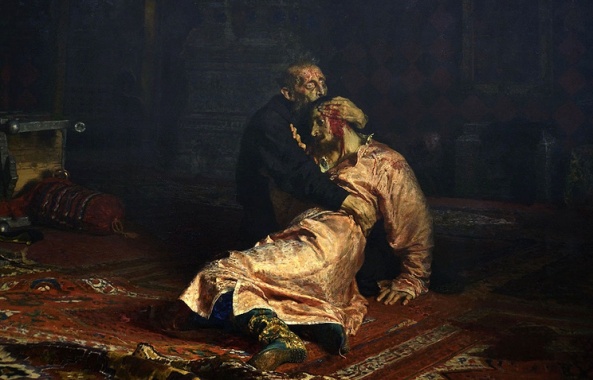
Iliya Repin. Ivan the Terrible and His Son Ivan on November 16, 1581. (1885)
The press service of the Tretyakov Gallery in Moscow, Russia, reported on Saturday, May 26, of the vandal attack on Friday evening that damaged the painting of Ilya Repin (1844 – 1930) “Ivan the Terrible and his son Ivan on November 16, 1581”.

Ilya Repin
“As a result of the blows, the thick glass that protected the work from fluctuations in the temperature-humidity regime was broken,” the gallery’s officials said in a statement.
“The painting is badly damaged, the canvas is ripped in three places in the central part…. The falling glass also damaged the frame. […] Luckily, the most valuable images, those of the faces and hands of the tsar and prince were not damaged”.
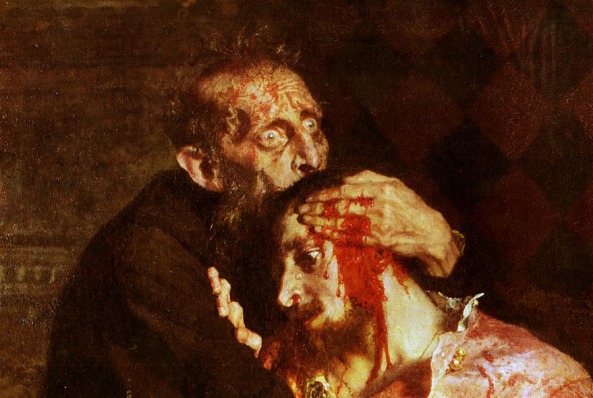 37-year-old man from the town of Voronezh was arrested by police shortly after the incident. The suspect declared that he had acted the way he did because of the falsehood of the depiction of historical facts on the canvas — his words in my translation.
37-year-old man from the town of Voronezh was arrested by police shortly after the incident. The suspect declared that he had acted the way he did because of the falsehood of the depiction of historical facts on the canvas — his words in my translation.

Tretyakov Gallery
By preliminary estimation, the restoration of the painting might take a few years.
In 1885, upon its completion, the painting made a furor both in St. Petersburg and in Moscow. Everyone whose opinion counted, admitted to having an utterly depressing impression both during and after observing the painting. The ladies fainted and had hysterics. Children cried inconsolably. Repin’s masterpiece was deemed harmful and by the order of the sovereign was banned from being exhibited.
Pavel Tretyakov, businessman, patron of art, collector and philanthropist (who gave his name to the Tretyakov Gallery) acquired the painting. It took awhile but the wrath was changed to mercy and the permission to exhibit the canvas in the gallery was granted.
The recent assassination of the famous painting was not the first one. On January 16, 1913, “Ivan the Terrible and his son Ivan on November 16, 1581”, a rather well known icon painter, crying out “Enough blood!” lunged on the painting with a knife and in three strokes pierced the faces of Ivan and his son. The madman was restrained and confined to the mental institution. After learning about the incident, the curator of the Tretyakov Gallery, the kindest and beloved by all Yegor Khruslov, committed suicide by trowing himself under the speeding train.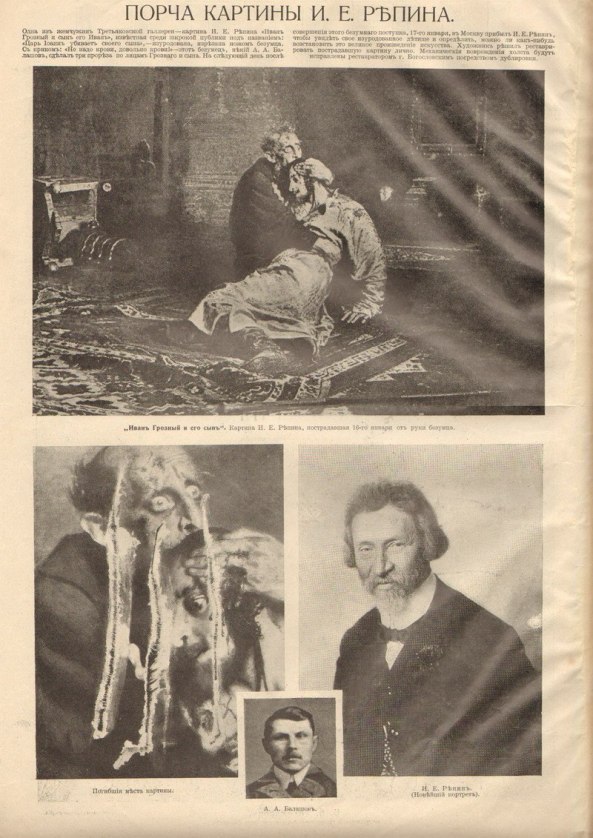 This is a newspaper article where the incident was first reported. Titled Damage to the painting by I. Repin carries the photographs of the damaged part of the painting, of the artist and the small inset is the photo of Abram Balashov, the vandal.
This is a newspaper article where the incident was first reported. Titled Damage to the painting by I. Repin carries the photographs of the damaged part of the painting, of the artist and the small inset is the photo of Abram Balashov, the vandal.
Interesting that the public opinion of the time was firmly on the side of the madman! Crazy Balashov was declared a victim of Repin’s “bloody, disturbing, violent” masterpiece. Such is the power of art.
Mysteriously and, well, terribly, Ivan the Terrible affected the fate of Repin’s models who selflessly set for his Ivan the Terrible. Repin was very particular and obsessively picky in choosing his models. 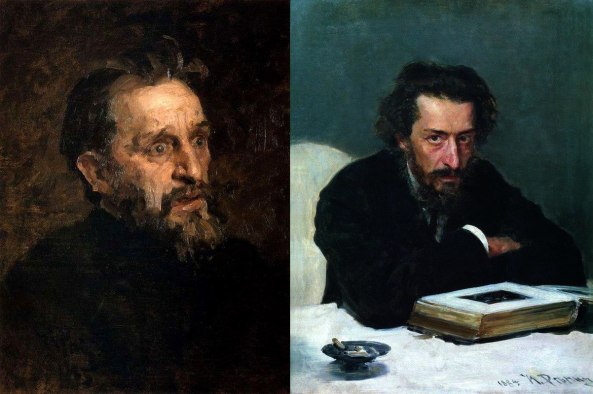 Artist Grigory Myasoyedov and composer Pavel Blaramberg were asked to pose as Ivan the Terrible. Grigory Myasoedov once in anger nearly killed his little son, also named Ivan.
Artist Grigory Myasoyedov and composer Pavel Blaramberg were asked to pose as Ivan the Terrible. Grigory Myasoedov once in anger nearly killed his little son, also named Ivan.
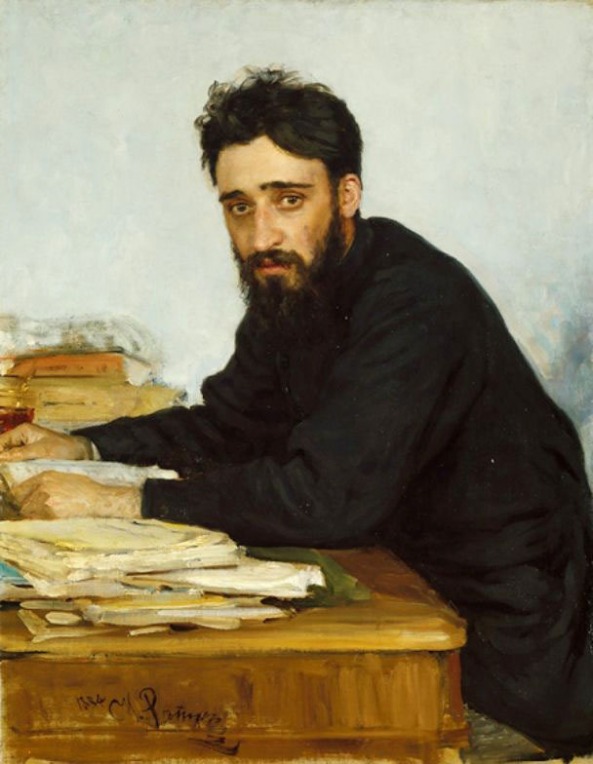 One of models for the head of the Prince was writer Vsevolod Garshin with his permanently teary eyes. A fragile and vulnerable person, the author of many wonderful fairy tales, he fell into a severe depression and during one of the anxiety attacks jumped from the fourth floor into the stairwell. He died in agony after five days, only 33 years old. Repin said about his choice of Garshin as his model, “I was struck by an utter doom written on Garshin’s face: he had the face of a man fated to perish before his time, which was excatly what I need for my prince.”
One of models for the head of the Prince was writer Vsevolod Garshin with his permanently teary eyes. A fragile and vulnerable person, the author of many wonderful fairy tales, he fell into a severe depression and during one of the anxiety attacks jumped from the fourth floor into the stairwell. He died in agony after five days, only 33 years old. Repin said about his choice of Garshin as his model, “I was struck by an utter doom written on Garshin’s face: he had the face of a man fated to perish before his time, which was excatly what I need for my prince.”
Soon thereafter, the terrible ailment struck the artist himself. Incongruously, his right arm withered away. Until the end of his life Repin had to paint and write with his left hand. The artist’s contemporaries recall that Repin could not even cross himself properly.
And, in conclusion, while hoping sincerely that Ivan the Terrible will be restored to its bloody, violent, mystical glory, here is the poster where Repin’s Ivan the Terrible behaves terribly toward the Russian Venus by Boris Kustodiyev.
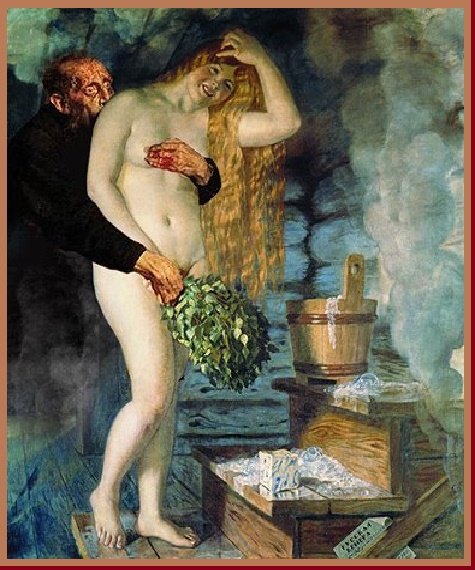
Victor Bregeda was born in 1963 in Taganrog, Russia, into a family of painters. The artist has stated that he has been painting for as long as he can remember.
After attending an art school in Russia, Bregeda made a decision to move forward with his personal interpretation of creative art, putting himself in sharp contrast with his academic art training.
This rebellious move proved victorious as Victor’s art quickly gained recognition in local and international contests.
“The key genres of my artwork are plein aire landscapes, still life compositions and portraits performed in a metarealistic style with strong roots in subconscious philosophy. I use a variety of techniques and materials while trying to invent new ones. I attempt to reveal the true nature of things hidden from empirical understanding,” — V. Bregeda
“I have been particularly influenced by the smooth techniques espoused by the Dutch school of painting. The artists who inspired me the most were Leonardo Da Vinci, Hieronymus Bosch, Peter Bruegel, Max Ernst, and Nikolai Rerikh. I like the French school of the 18th – 19th centuries as well as the works of Andrew Wyeth. I grew up in a strong creative environment. My artistic abilities are in my blood, thanks to my forefathers.” — V. Bregeda.

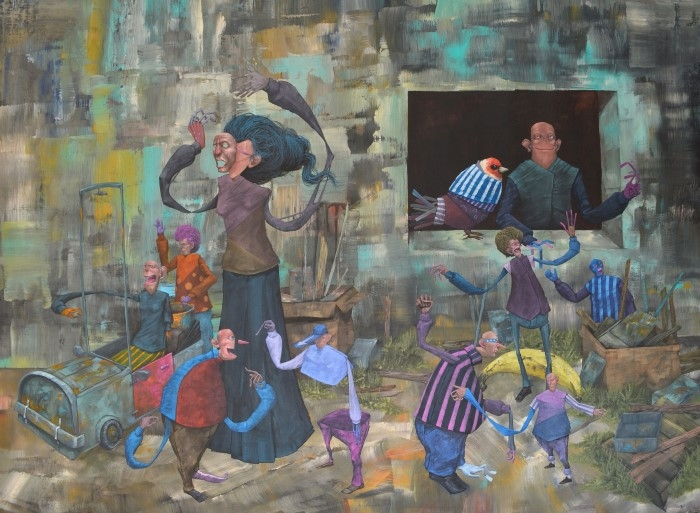
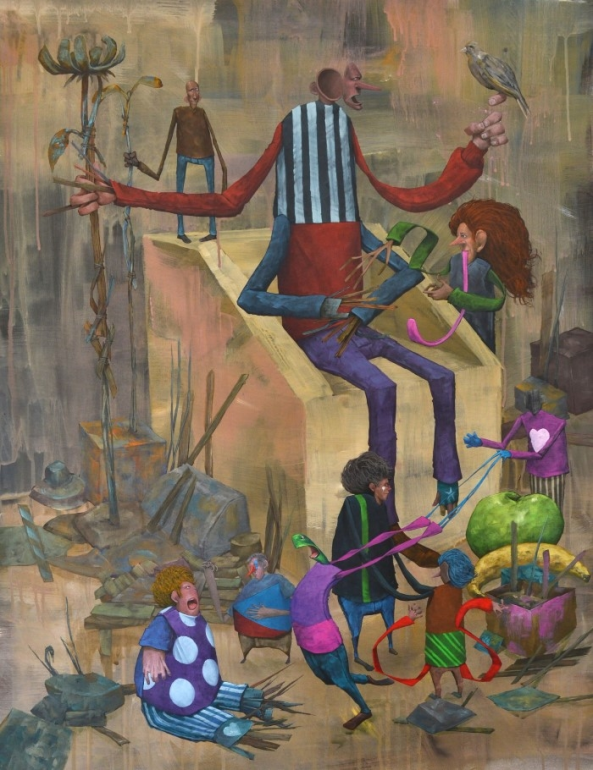 Born in 1981, Tof Vanmarque grew up in Lanrivoare, Breton countryside. After being bored at the Technical High School in Brest, he’s off into the world, trying a good number of odd jobs, tiler and shepherd among them. Always drawing, he enrolls into the Pivaut School in Nantes in 2003 to learn the art, craft and technique of creating cartoons.
Born in 1981, Tof Vanmarque grew up in Lanrivoare, Breton countryside. After being bored at the Technical High School in Brest, he’s off into the world, trying a good number of odd jobs, tiler and shepherd among them. Always drawing, he enrolls into the Pivaut School in Nantes in 2003 to learn the art, craft and technique of creating cartoons.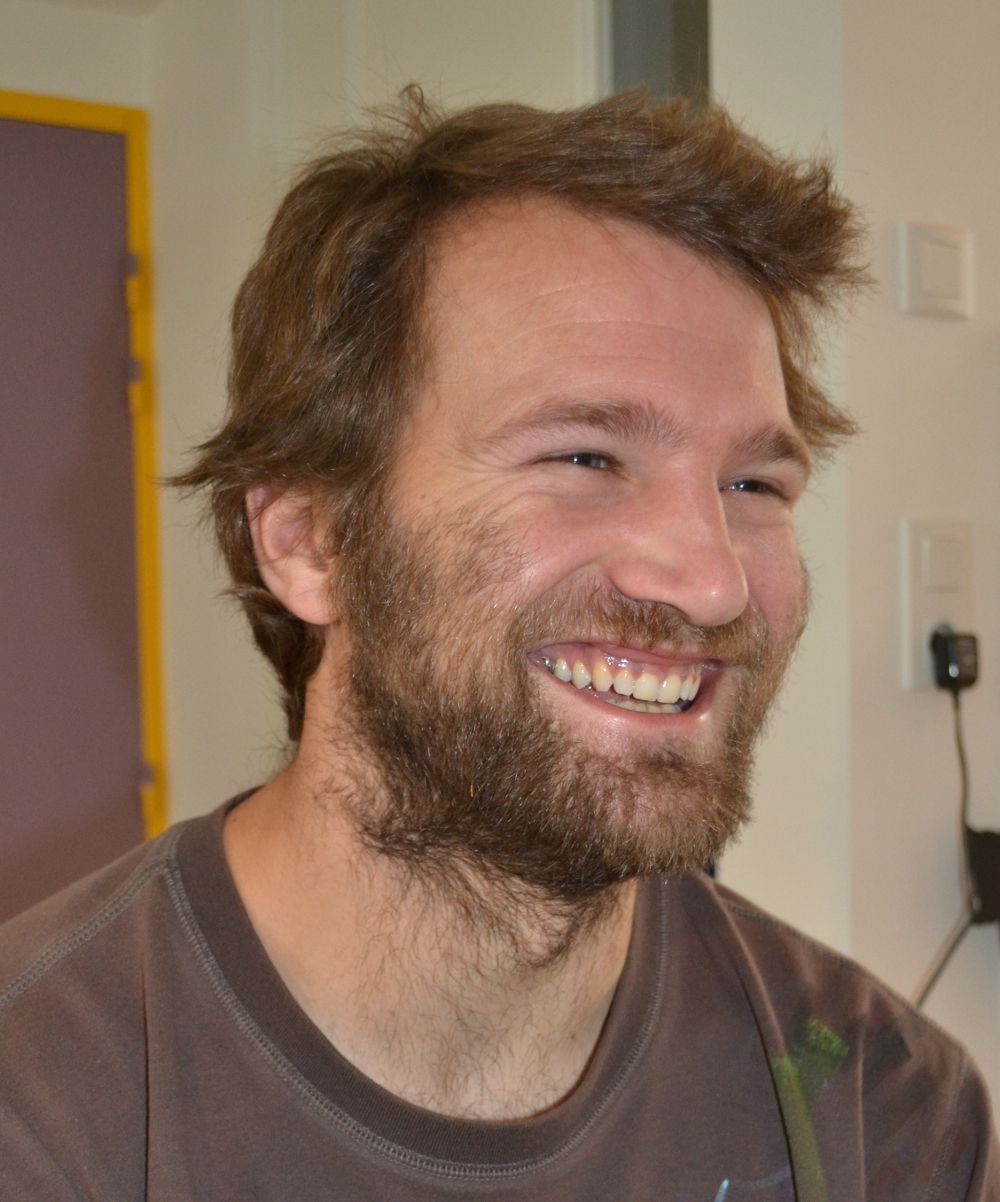
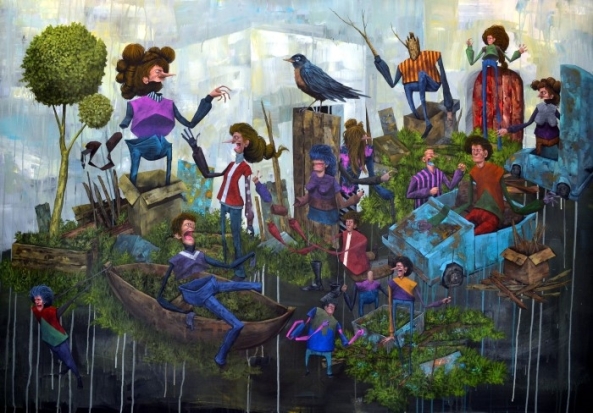
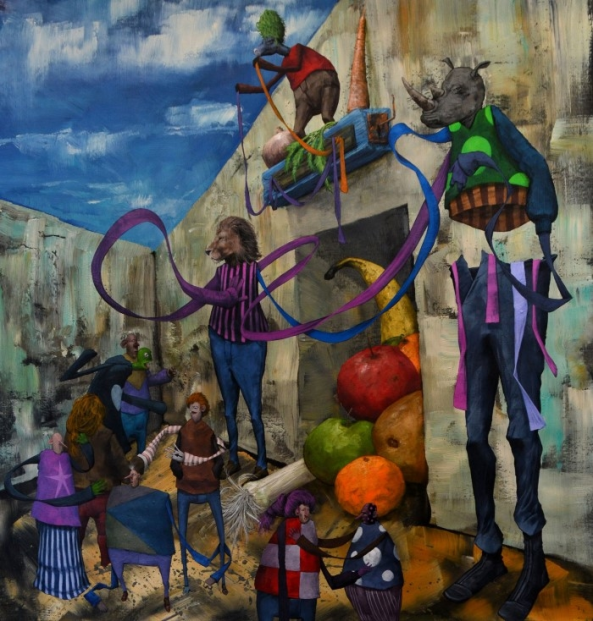
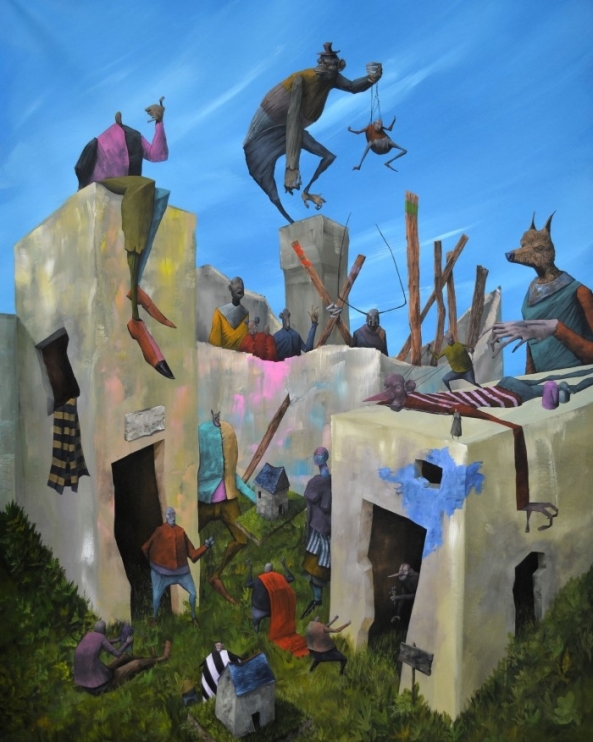
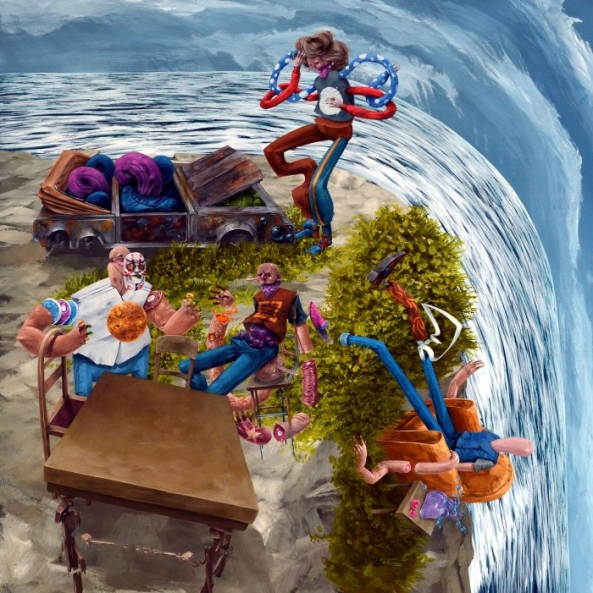
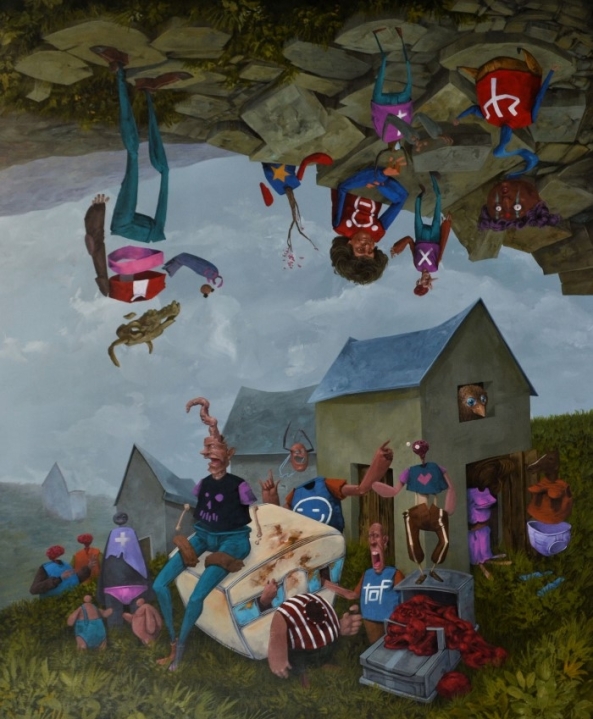
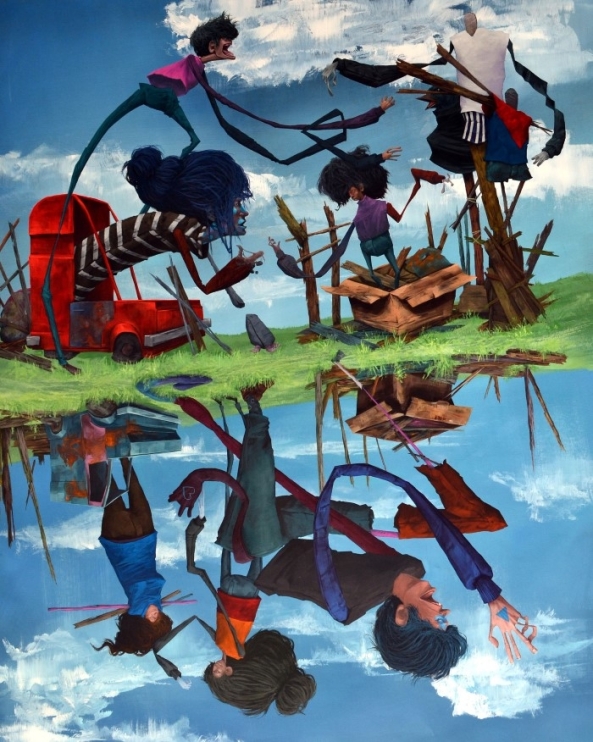
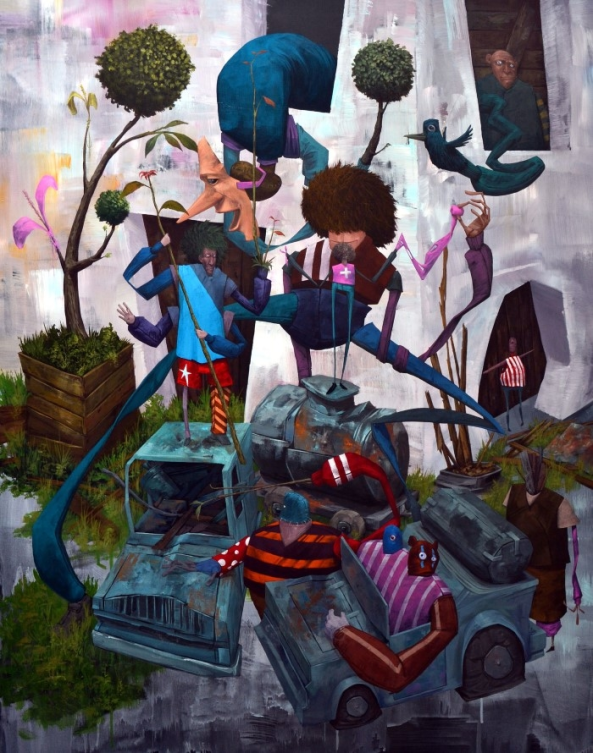
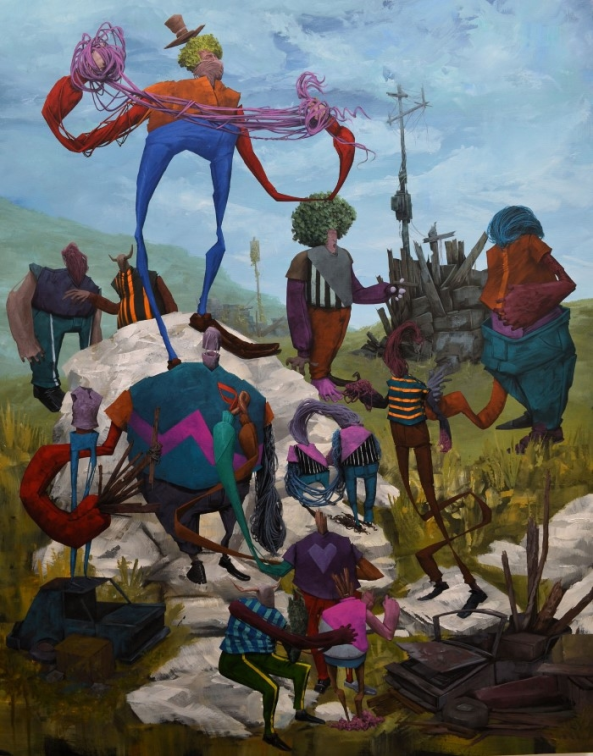
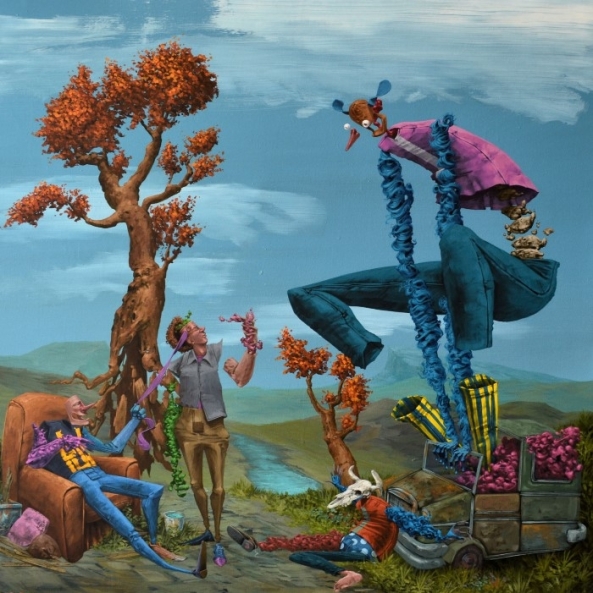
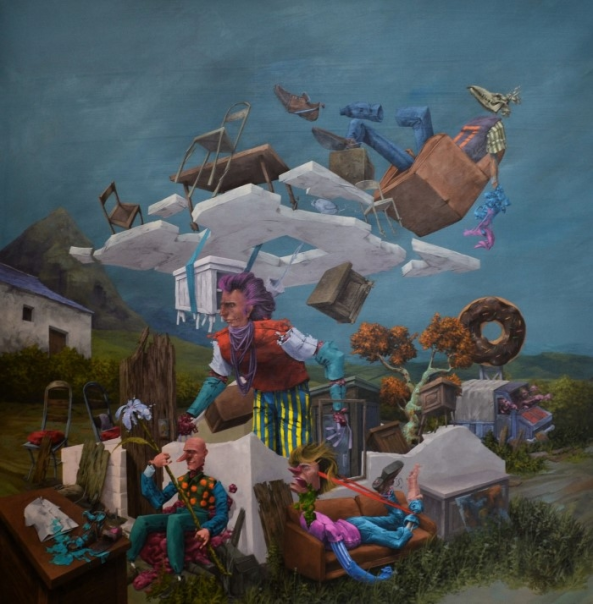
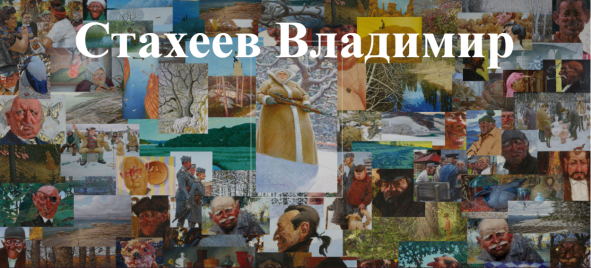
 Vladimir Stakheev, born in 1963, is a Russian painter from Moscow, member of the Union of Creative Artists of Russia.
Vladimir Stakheev, born in 1963, is a Russian painter from Moscow, member of the Union of Creative Artists of Russia.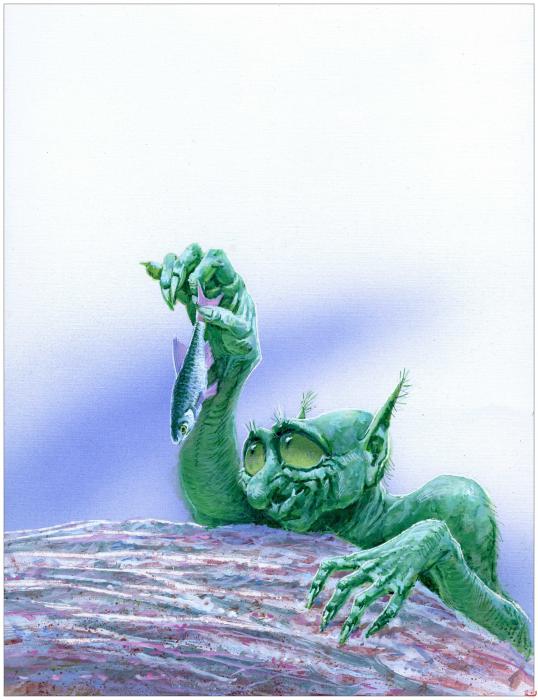



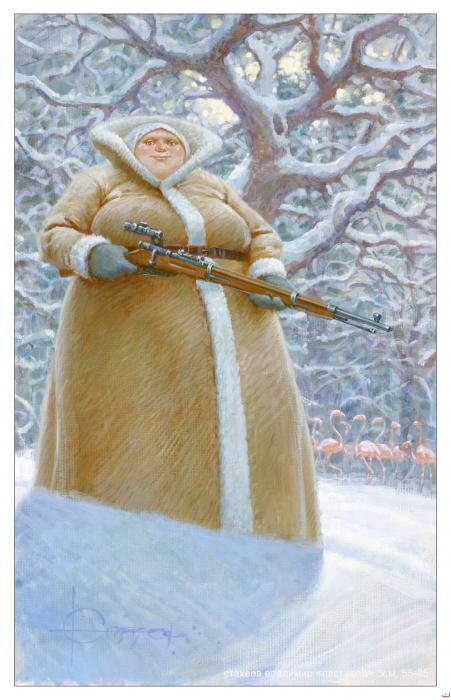


 37-year-old man from the town of Voronezh was arrested by police shortly after the incident. The suspect declared that he had acted the way he did because of the falsehood of the depiction of historical facts on the canvas — his words in my translation.
37-year-old man from the town of Voronezh was arrested by police shortly after the incident. The suspect declared that he had acted the way he did because of the falsehood of the depiction of historical facts on the canvas — his words in my translation.
 This is a newspaper article where the incident was first reported. Titled Damage to the painting by I. Repin carries the photographs of the damaged part of the painting, of the artist and the small inset is the photo of Abram Balashov, the vandal.
This is a newspaper article where the incident was first reported. Titled Damage to the painting by I. Repin carries the photographs of the damaged part of the painting, of the artist and the small inset is the photo of Abram Balashov, the vandal. Artist
Artist  One of models for the head of the Prince was writer
One of models for the head of the Prince was writer 
 He is compared to Pablo Picasso, Salvador Dali, Pavel Filonov, called “maestro of the highest prestige”, Rembrandt of our days. Not always even fully comprehending his works, people are drawn to them. Who is the genius of the brush?
He is compared to Pablo Picasso, Salvador Dali, Pavel Filonov, called “maestro of the highest prestige”, Rembrandt of our days. Not always even fully comprehending his works, people are drawn to them. Who is the genius of the brush?
 Ivan Marchuk was born in 1936, a family of a weaver, in a Western Ukrainian village. He studied applied art in
Ivan Marchuk was born in 1936, a family of a weaver, in a Western Ukrainian village. He studied applied art in  The artist works tirelessly to create his own pictorial style. He finds inspiration in the most ordinary things.
The artist works tirelessly to create his own pictorial style. He finds inspiration in the most ordinary things. In the late 1980s he emigrated to Australia, then traveled to Canada and the USA. But, he was always drawn back to his native land.
In the late 1980s he emigrated to Australia, then traveled to Canada and the USA. But, he was always drawn back to his native land. “Give me a thousand more years and I’ll paint heaven.”
“Give me a thousand more years and I’ll paint heaven.” He has created his own art technique, which he calls “Pliontanism” (from the Ukrainian “pliontaty” – to weave, knit). Instead of painting with the usual strokes, he traces and weaves amazing lace networks on his canvas.
He has created his own art technique, which he calls “Pliontanism” (from the Ukrainian “pliontaty” – to weave, knit). Instead of painting with the usual strokes, he traces and weaves amazing lace networks on his canvas. “There were times when people stood in front of a painting for half an hour. It’s abstract, but it’s done with the hands of a skilled jeweler. We sense a 3D effect.” says Maksym Voloshyn.
“There were times when people stood in front of a painting for half an hour. It’s abstract, but it’s done with the hands of a skilled jeweler. We sense a 3D effect.” says Maksym Voloshyn. After years of intensive work, Ivan Marchuk admits that art is both a revelation and a lot of hard work. He dreams of resting and relaxing, but returns to his studio every morning.
After years of intensive work, Ivan Marchuk admits that art is both a revelation and a lot of hard work. He dreams of resting and relaxing, but returns to his studio every morning. “If you look at a painting from a distance, you’ll see an ordinary landscape, but when you come a little closer, you notice that unusual threads are woven throughout the painting.” says Maksym Voloshyn, director of Mystetska Zbirka Art Gallery.
“If you look at a painting from a distance, you’ll see an ordinary landscape, but when you come a little closer, you notice that unusual threads are woven throughout the painting.” says Maksym Voloshyn, director of Mystetska Zbirka Art Gallery. In October 2007, Marchuk was included in Britain’s list of top living geniuses, drawn up by the Daily Telegraph. This curious list, however, deserves its own post…
In October 2007, Marchuk was included in Britain’s list of top living geniuses, drawn up by the Daily Telegraph. This curious list, however, deserves its own post…
 Boîte-en-valise, yet another Duchamp, is a portable museum containing 68 of his most famous works, either reproduced or miniaturised, has been sold for €319,500.
Boîte-en-valise, yet another Duchamp, is a portable museum containing 68 of his most famous works, either reproduced or miniaturised, has been sold for €319,500.
 He paints portraits and landscapes, animals and the ocean and it seems that there is no such theme on the basis of which he could not create his picture.
He paints portraits and landscapes, animals and the ocean and it seems that there is no such theme on the basis of which he could not create his picture. Joel prefers to work with canvas and oil, perfecting every smallest detail.
Joel prefers to work with canvas and oil, perfecting every smallest detail.






 Continued from
Continued from 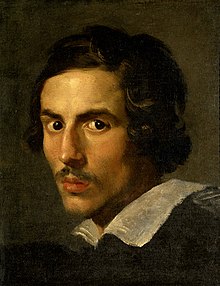
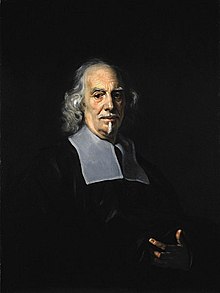









 Christ in the Wilderness. Driven by the Spirit. And immediately the Spirit driveth him into the wilderness.” Mark 1:12
Christ in the Wilderness. Driven by the Spirit. And immediately the Spirit driveth him into the wilderness.” Mark 1:12
 The director of the Tate Gallery found Spencer lodgings near Swiss Cottage Tube station in north London. It was in this bedsit that the artist embarked on a series of paintings called Christ in the Wilderness, which included this panel, Consider the Lilies.
The director of the Tate Gallery found Spencer lodgings near Swiss Cottage Tube station in north London. It was in this bedsit that the artist embarked on a series of paintings called Christ in the Wilderness, which included this panel, Consider the Lilies. Many dismissed the artist as an eccentric crank. He identified himself with religious figures, dwelling in contemporary village. Still, it’s exactly this very eccentricity that Spencer’s works so powerful, art lovers and art critics alike agree.
Many dismissed the artist as an eccentric crank. He identified himself with religious figures, dwelling in contemporary village. Still, it’s exactly this very eccentricity that Spencer’s works so powerful, art lovers and art critics alike agree.
